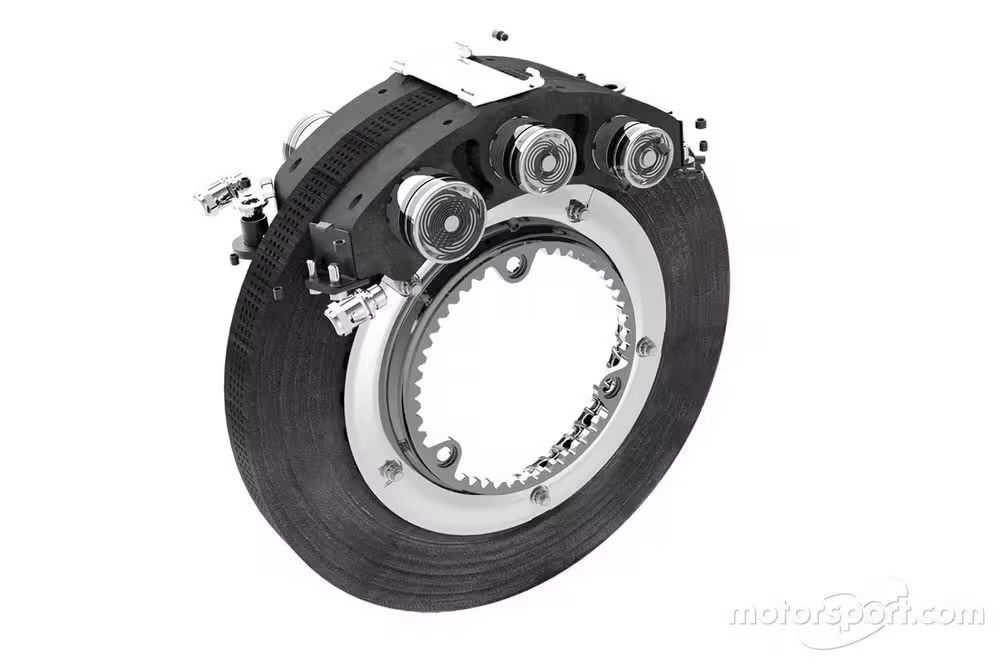Speculation in Formula 1 got intense during the summer break in the wake of a change the FIA made to the technical regulations outlawing asymmetrical braking systems.
Off the back of the most recent FIA World Motor Sport Council meeting that ratified a host of revised and future rules, an added clause regarding braking systems set tongues wagging.
The changed Article 11.1.2 of F1’s Technical Regulations had some fresh text which is in bold below.
“The brake system must be designed so that within each circuit, the forces applied to the brake pads are the same magnitude and act as opposing pairs on a given brake disc. Any system or mechanism which can produce systematically or intentionally, asymmetric braking torques for a given axle is forbidden.”
Brembo F1 brake pistons detail
Photo by: Brembo
The nature of the mid-season change to the technical regulations, something which is not very common, fuelled a wave of speculation that the FIA was responding to a device that one or more teams may have been using this season.
There were even wild accusations thrown at Red Bull that its drop of form since the Miami Grand Prix was linked to a potential banning of a system it may have been using – with some even suggesting that Max Verstappen’s retirement from the Australian Grand Prix could have been linked to this.
However, the reality of the situation is very different as high-level sources at the FIA have explained that the change was not prompted at all by anything teams were doing at the moment – it was more about future-proofing regulations.
An FIA spokesman told Motorsport.com: “There is no truth that any team was using such a system.”
So what was going on?
Ultimately the tweak alters very little when it comes to the legality of asymmetric brake systems. The changes made by the FIA to 11.1.2 of the technical regulations are supplemental to the original text, which only implies that the forces being applied to the brake pads are equal on either side of the calliper.
The new and additional text forbids the braking circuit, either front or rear, to be able to produce asymmetric braking torques.
It therefore prohibits what would more commonly be referred to as a brake steer system, whereby one wheel, usually the inside wheel, is braked with more bias than the outside, in order to help balance and steer the car.
However, according to FIA sources, the wording that was originally in place was already enough to make any…
Click Here to Read the Full Original Article at Motorsport.com – Formula 1 – Stories…

